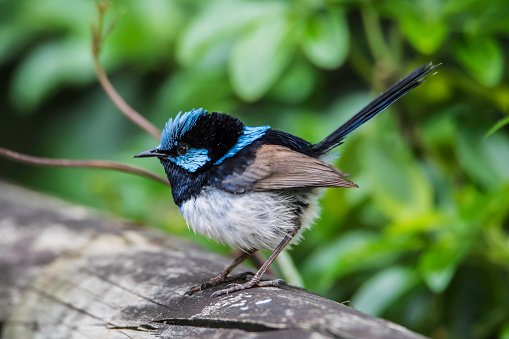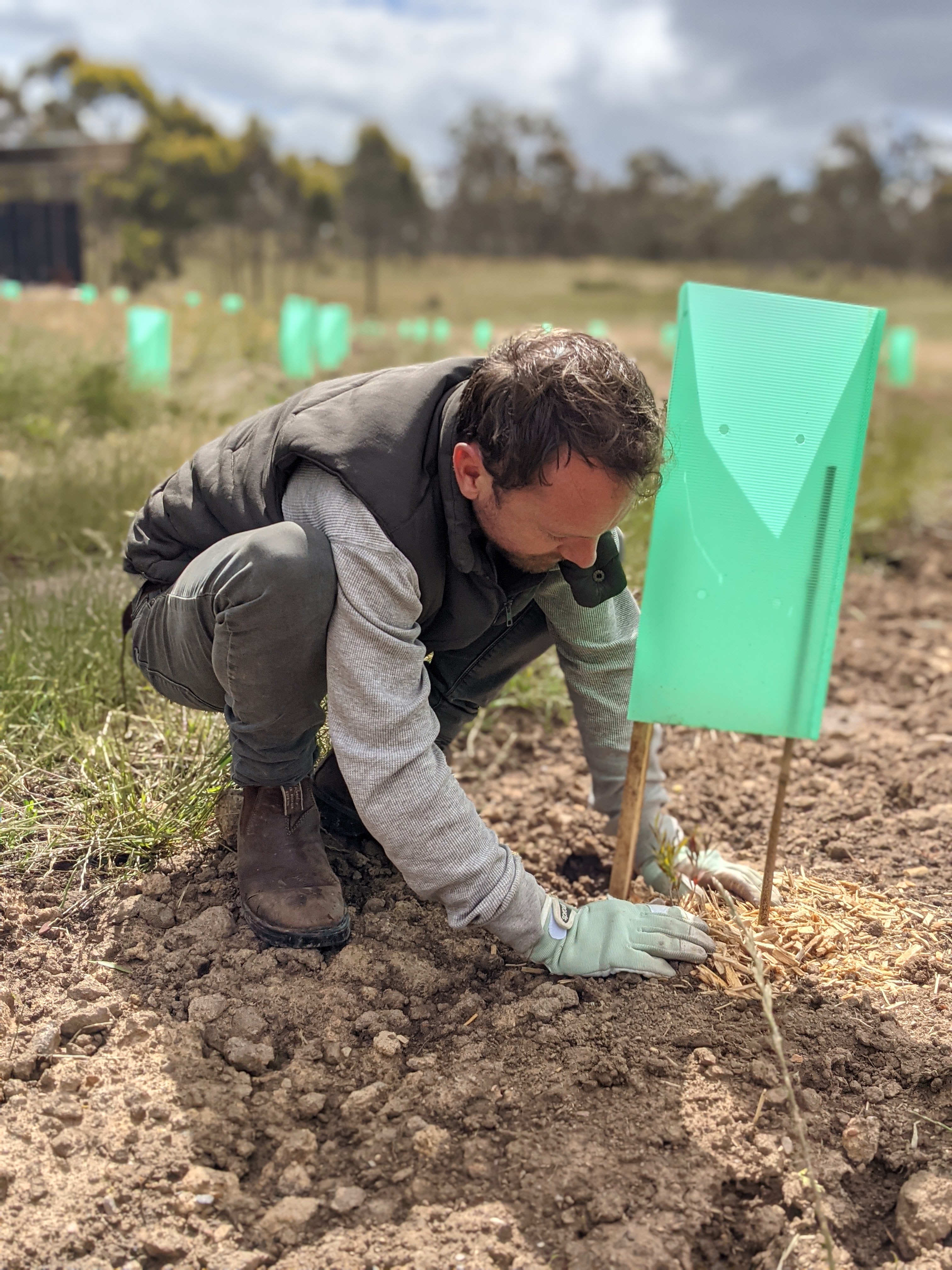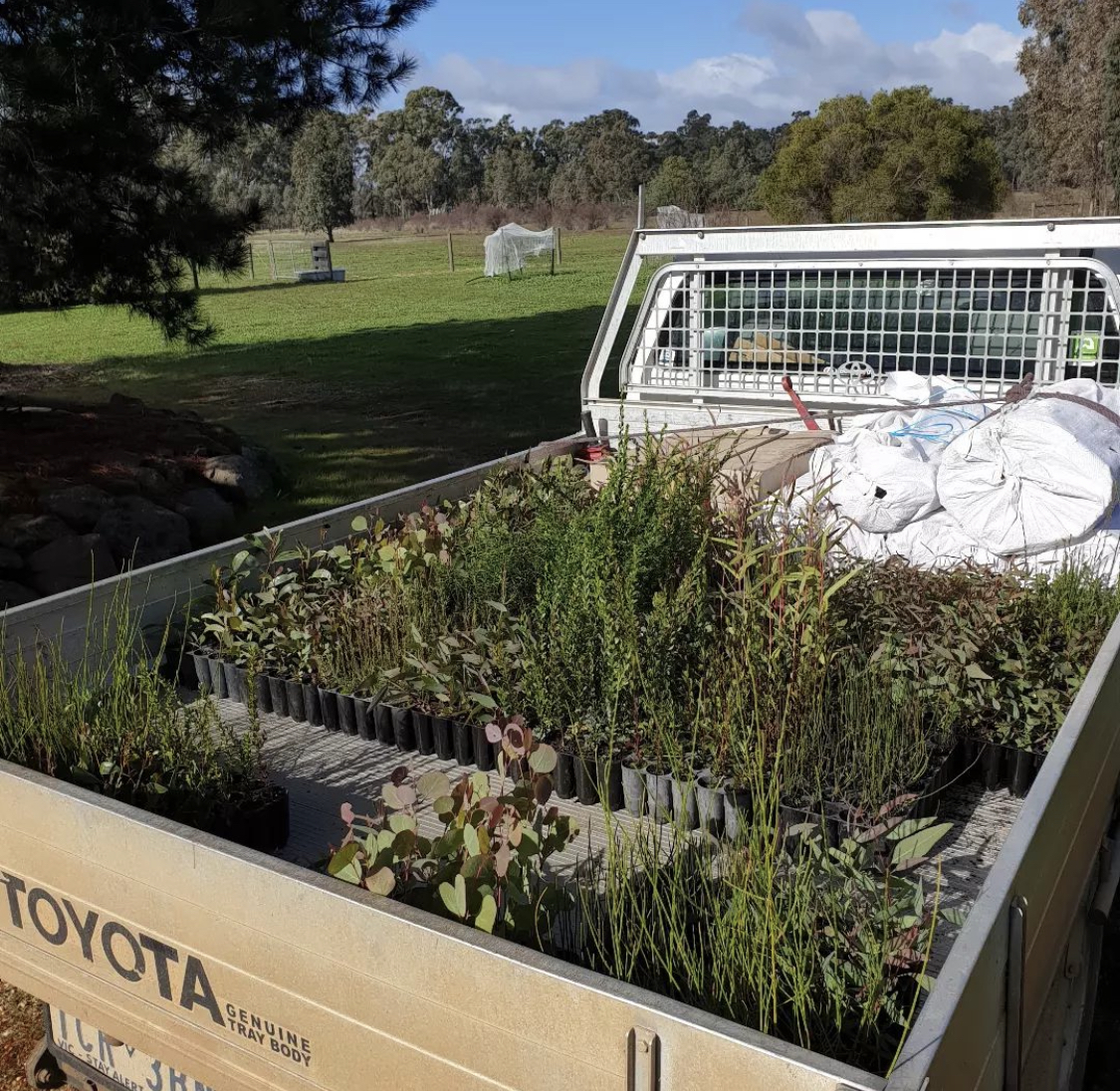December 1, 2023
|
A Subscription for the Planet. End of Year Report.
TREES PLANTED
6,000
Dear Friends of Fifteen Trees,
As we come to the closing of the year, we want to give a heartfelt thank you to all our ‘Subscribers for the Planet’.
Recently, we hit our 100th subscriber! And with that milestone number we were able to distribute 6,000 trees to 12 community groups in VIC, TAS, WA, SA and QLD. Please take a little time to read about your impact and the wonderful people out there who are doing so much for their patch of the earth.
Colleen Filippa | Founding Director | Fifteen Trees
Thank you to all our wonderful supporters …
Mik Aidt, Deborah Bourke, Dana Bretag, Sandra Briody, Daniel Cherry, Jenn Clark, Amanda Gambino, Hilary Grigg, Glenys Grigg, Rose Harrison, Elizabeth Howson, Rosie Hunt-Walshe, Andrea Hurley, Jacob Johnston, Sean Keniry, Sara Kittelty Annabel Mason, Jill Clark + Paul Duggan, Rosalind Read, Annabel Ritchie, Lynn Teale, Mary Wade, Lorena Wootton, Helen Browitt, Bette Schwarz, Rae Knowler, Caitlyn Jordan, Sonja Meyer, Georgina Imberger, Carole Felmy, Claudius Stanislaus, Julia McGregor, Fiona Leahy + Antony Swingler, Sandra Hawkins, Christopher Hawkins, James Hosking, Marian Turner, Nyree Windsor, Lucy Bracey, Sarah Hart, Eliza-Jane Gilchrist, Fiona Baxter, Jessica Reeves, Corinna Klupiec, Jess Tatham-Thompson, Sam McColl, Heather Charlesworth, Anne Muirhead, Leona Lees, Pauline Clancy, Sean Werth, Marine Stoll, Paul Mason, Sylvia Nevistic, Bronwen James, Sharon Chan, David + Karen Dawson, Lee Palmer, Michael Nicols, Keitha Theodore, Ellen Burns, Natasha Ludowyk, Daniel Cocking, Belinda Coates, Tim Johnston, Amy Clark, Jo Cosgriff, Lena Mazza, Andrew Griffiths, Jen Askham, Anthony + Catherine Clifford, Marlie + Kelli Grant, Elsa Lynn, Samantha Healy, Amy + Andrew, Douglas Proctor, Marji Puotinen, Andy Booth, Matthew Stevens, Esther Cantwell, Susan + Darryl Murray, Bree Webster, Liam Derby, Sara Melvin, Sarah Bentley, Linda Lee Ward, Fern Hames, Helen Browitt, Daniel Cocking, Cait Larcombe, Swell Magazine, Deborah O’Connell, Anthony Sleeman, Denise McAloon, Erin Lee, Sam Munday, Louise McCartin, Susanna Morrison, Russell Baker and Moira Finucane.
This is where your trees were planted this year:
- Gannawarra, VIC | 200 trees
- Grampians, VIC | 500 trees
- Mornington Peninsula, VIC | 1,300 trees
- Mt Worth, VIC | 800 trees
- Napoleans, VIC | 300 trees
- Wimmera, VIC | 700 trees
- Esperance, WA | 500 trees
- Hindmarsh, SA | 150 trees
- Cassowary Coast, QLD | 250 trees
- Daintree Rainforest, QLD | 500 trees
- Coal Valley, TAS | 550 trees
- Dodges Ferry, TAS | 250 trees
Site 1 | Gannawarra, VIC | 200 trees
The small township of Gannawarra is located in the northern part of VIC along the Murray River in the Gannawarra Shire. The Loddon River flows through the shire, feeding into the Murray. This is significant River Red Gum country. And it is here that we planted 200 native trees on the behalf our Subscribers for the Planet.
The trees were a mixture of species sourced from Neagnar Nursery in Bendigo and planted by the Murray Mallee Landcare Network (MMLN).
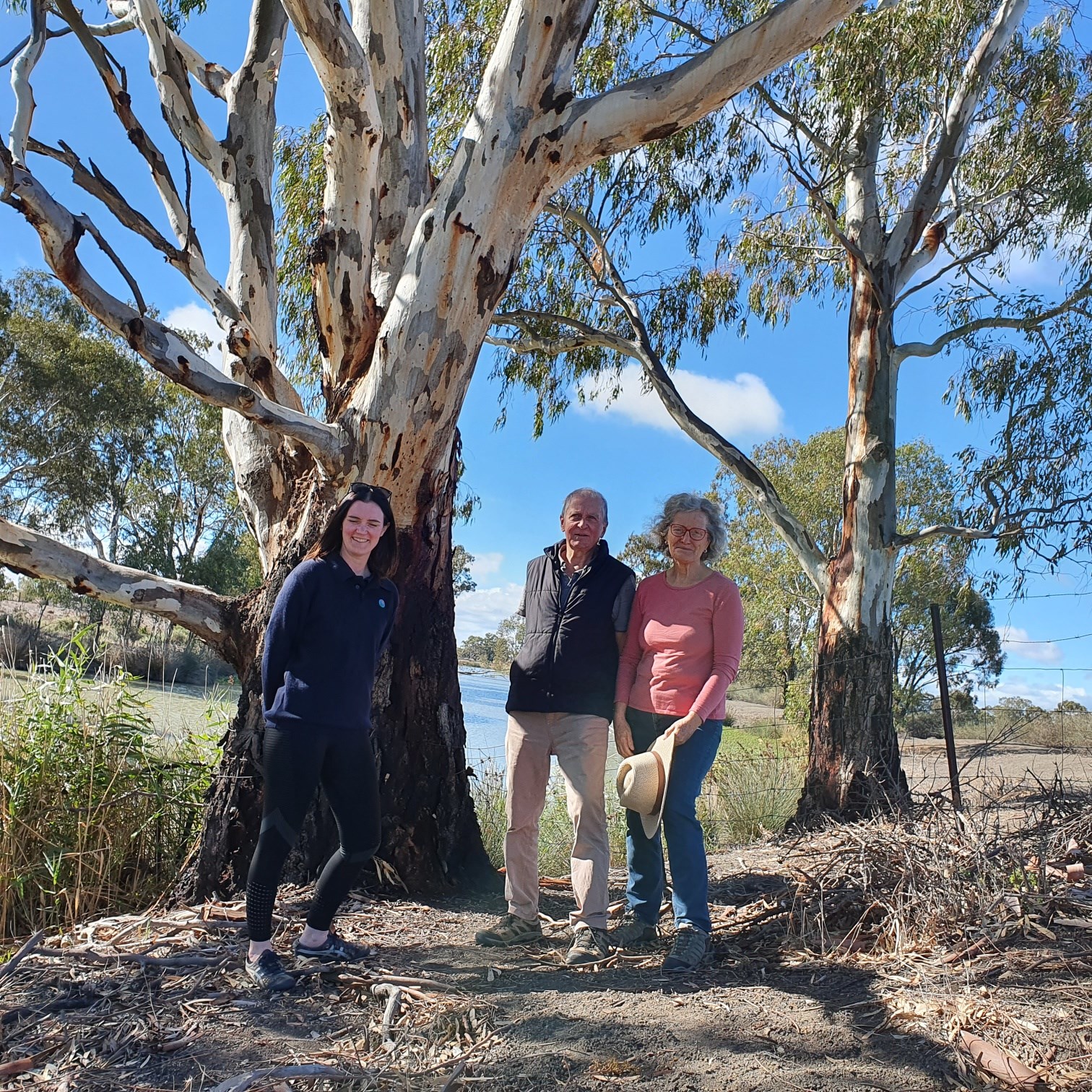
Some of the MMLN volunteers.
Site 2 | Grampians | 500 trees
We planted these trees at Slaty Creek (Dja Dja Wurrung Country) in the Western District of Victoria with the assistance of the Buloke and Northern Grampians Landcare Network. The trees were predominantly Buloke and Drooping Sheoak, 2 species of trees that dominated the landscape in the past.
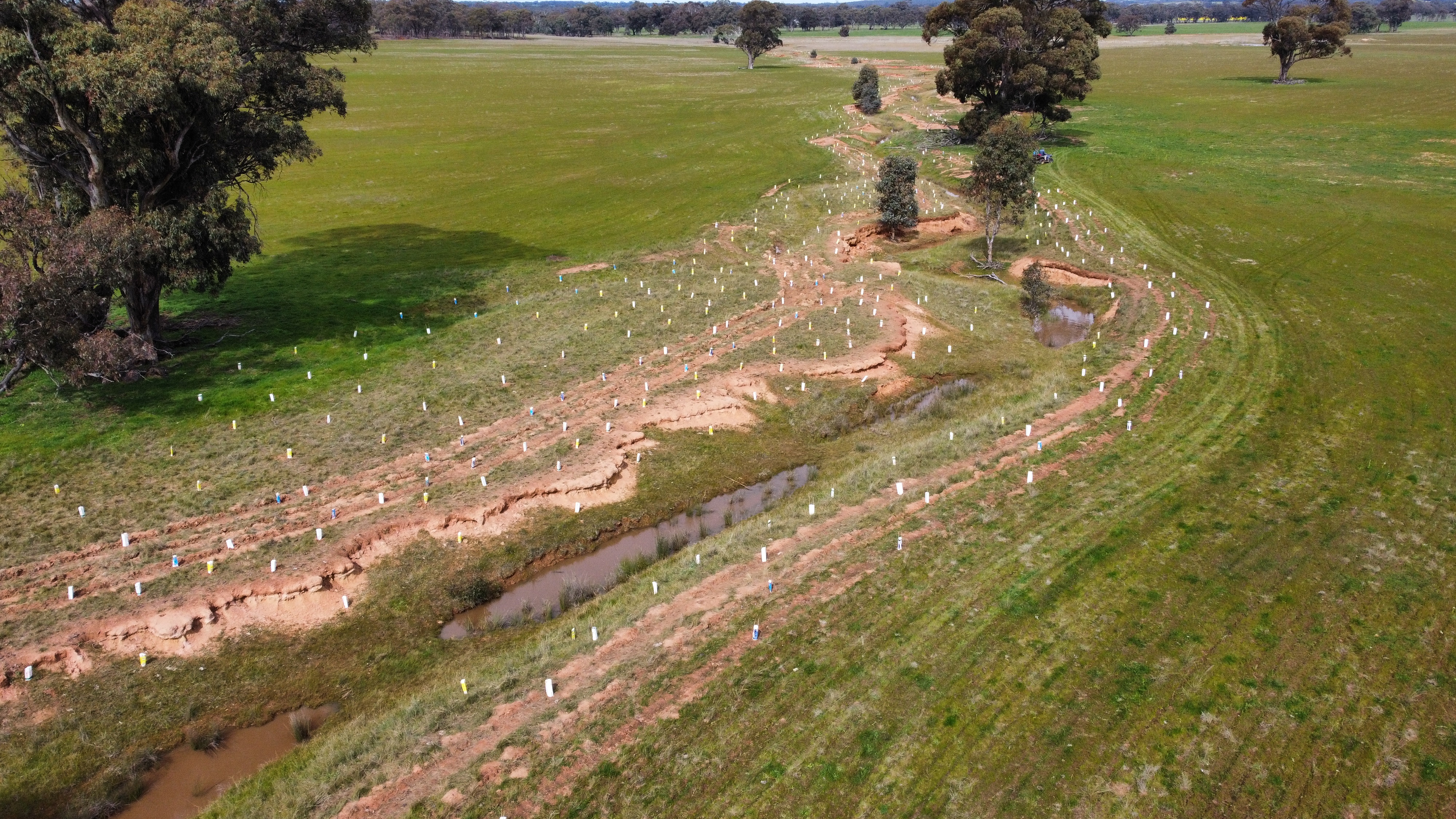
Traditionally, this would have been Buloke Woodland – home to Red Tailed Black Cockatoos (which feed on Buloke seed pods) – now very rarely seen in this district. The land was significantly cleared for agriculture and Buloke (one of the hardest woods in the world) was used as firewood and fenceposts. It’s not regarded as a particularly ‘pretty’ tree by the average farmer who also dislike it for its lack of fast development (it can take a hundred years to mature), and it readily succumbs to intensive agriculture activity. This particular site would once have been Buloke woodland. Intensive farming has caused a natural degradation and there is significant erosion. This planting of 100 trees (part of a larger planting of 900 trees) will form part of a network of habitat bio-corridors for all sorts of native animals and birds, while this and successive plantings will also alleviate the issues of erosion.
A huge thank you to the sponsors of these trees. You are helping to build habitat, fix erosion, increase soil carbon; and hopefully, together we can bring back the Black Cockatoos!
Andrew Borg | Facilitator | Buloke and Northern Grampians Landcare Network
We interviewed Andrew last year, here’s what he said about his part of the world.
Site 3 | Mornington Peninsula | 1,300 trees
The Somers Koala Habitat Project is a fabulous project to support. With over 70% of landholders participating in this revegetation project it is also backed by Mornington Peninsula Shire, Parks Victoria and the Department of Defence. And now with sponsors such as Fifteen Trees supporters, this revegetation project has grown by leaps and bounds.
The project is coordinated by the Mornington Peninsula Koala Conservation (MPKC), a group dedicated to creating a koala wildlife corridor (connecting existing sections of koala habitat and food trees) on the Mornington Peninsula. This involves planting in the existing koala corridors, thereby encouraging koalas out of urban areas and away from the many threats they face.
To achieve our goals, we need funding to purchase trees for wildlife corridors. All money received goes directly towards bringing our project and goals to life. Thank you to supporters of Fifteen Trees for your assistance by purchasing trees on our behalf.
Dirk Jensan | Coordinator | MPKC
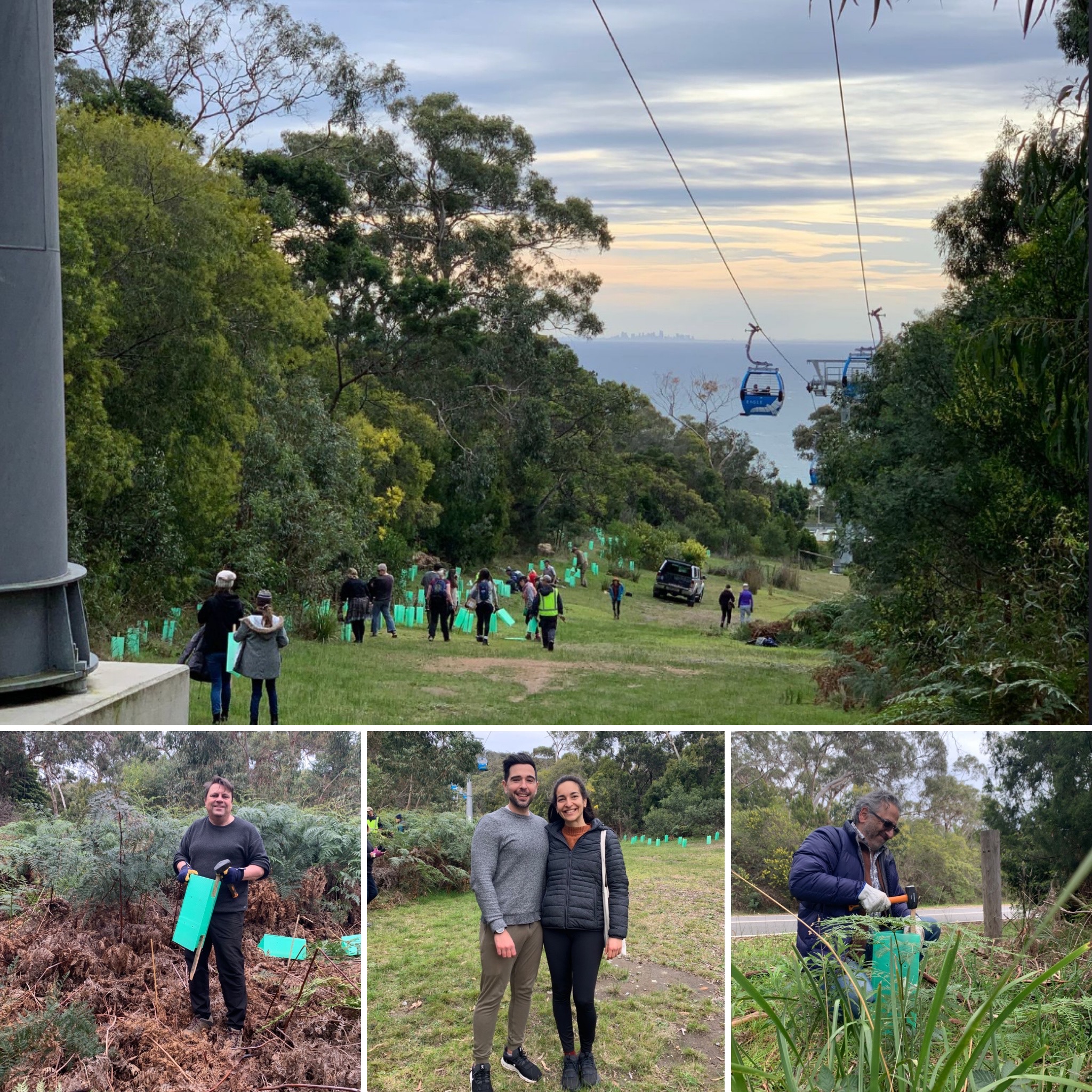
Here’s a few reasons why this project is so important:
- Recent research from Deakin University suggests that the koala population has been negatively impacted by the highly fragmented nature of habitat on the Mornington Peninsula.
- By providing a wildlife corridor it will allow animals including koalas to move safely, to reach vital food resources and help maintain viable populations.
- Without this, koala populations will inevitably continue to decline, become isolated and may face local extinction.

Some of the trees planted included; Drooping Sheoak, Coastal Banksia, Messmate, Swamp Gum, Coastal Manna Gum, Narrow-leafed Peppermint, Black Wattle, Blackwood, Scented and Swamp Paperbark and Silky Hakea.
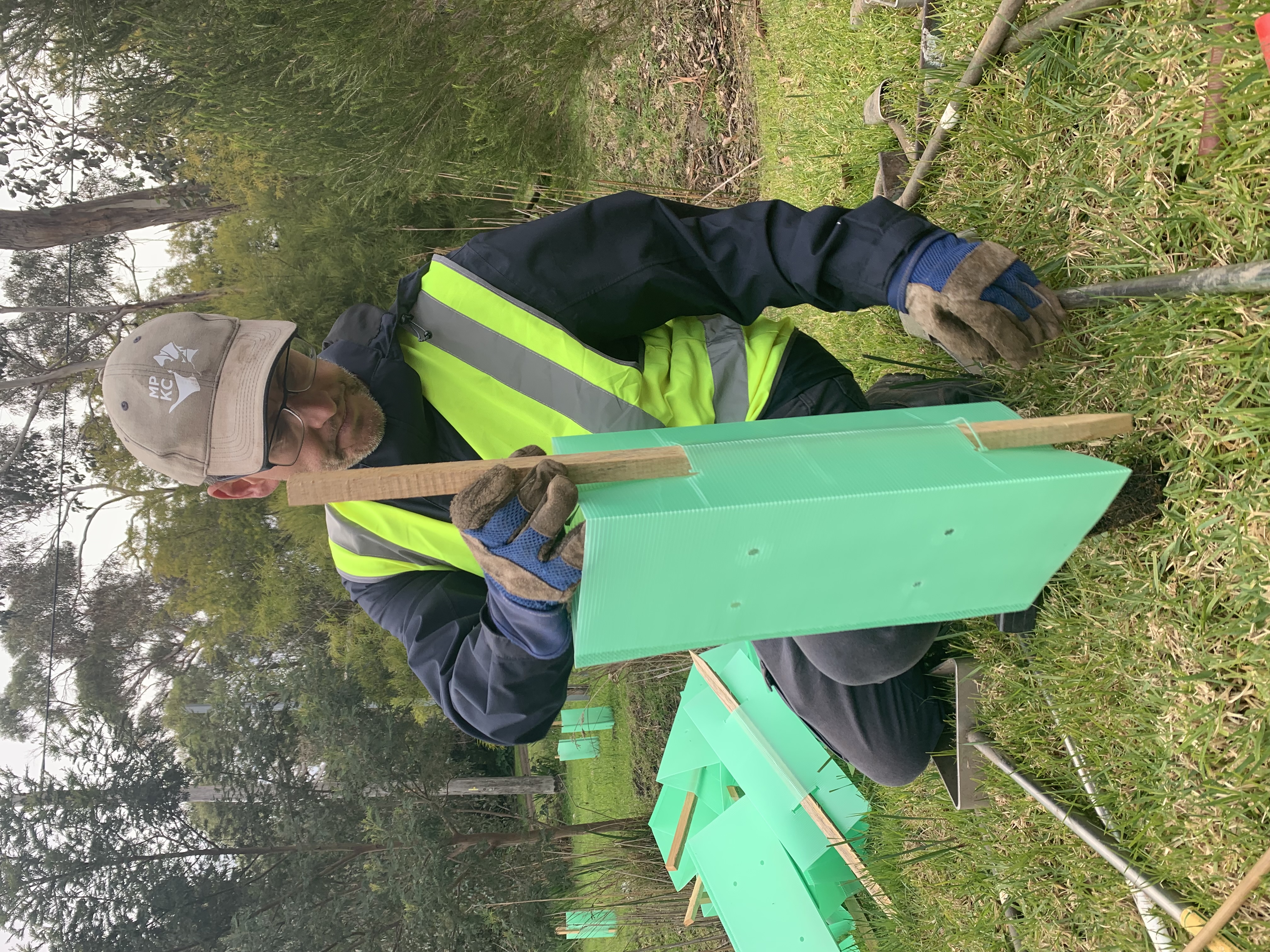
Site 4 | Mount Worth, VIC | 800 trees
The trees were planted by Mt Worth Landcare group in the Baw Baw Shire at 2 sites; Cloverlea and Ferndale, the original home of the Bunurong people. The trees were sourced from Grand Ridge Propagation, who also supplied various indigenous eucalypts, wattle trees, shrubs, and grasses. At these sites, the group are aiming to re-vegetate on the steep slopes, not only to provide habitat for the native wildlife, but to also help control erosion. Long term, these trees will build up a new ecosystem which will support many forms of flora and fauna.
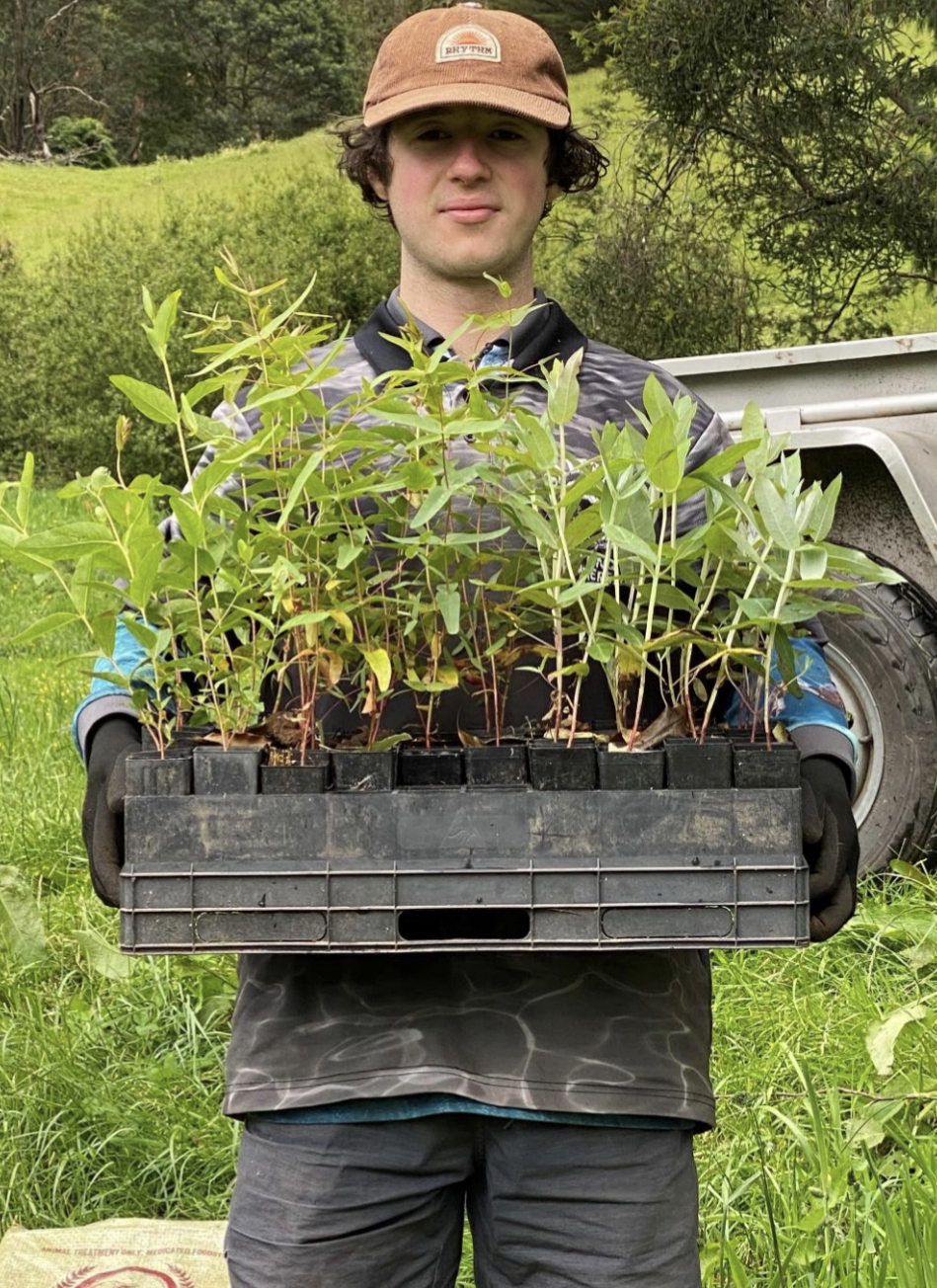
The planting will also assist in stabilising the creek banks, indigenous plants are well suited for revegetation of the degraded land of the property. In addition, the heavily scented nectar on flowers will attract pollinating beetles and seed eating birds.
We really appreciate the support and would like to thank subscribers to Fifteen Trees for providing the plants for us this year. Your contribution is invaluable.
Leon Cui | Member | Mt Worth Landcare
5 | Napoleans, VIC | 300 trees
Andrew Ballesty from the Napoleans-Enfield Landcare group planted out a variety of trees and shrubs with the aim to create native habitat for wildlife in the district. The plants were sourced from Ballarat Wildplants, a local nursery who supplies landcare groups in the area with their indigenous plants. Andrew planted a mixture of Eucaluptus (candle bark and Manna gums), tea trees (river and wooly) and wattles (silver, lightwood and blackwood).
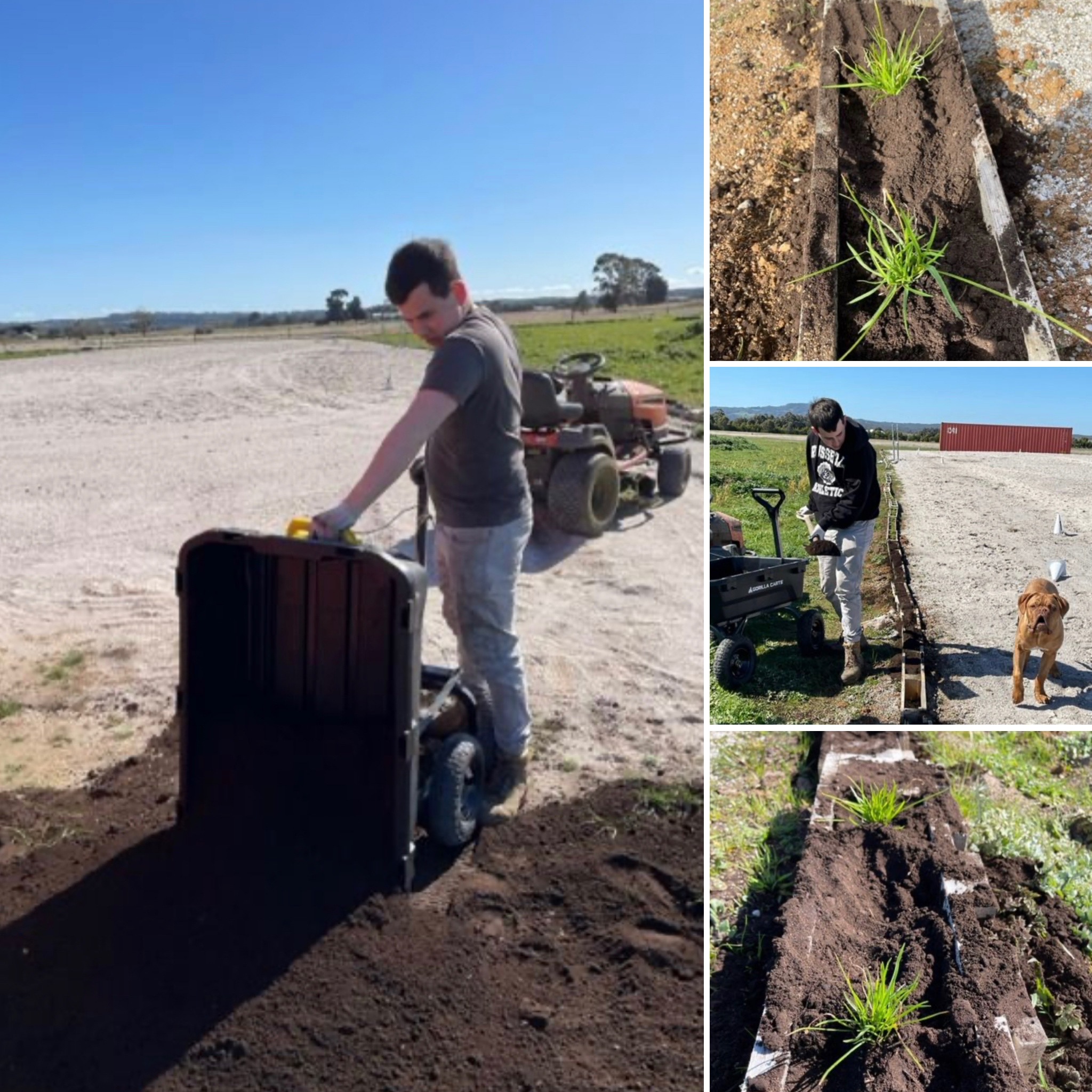
Site 6 | Wimmera, VIC | 700 trees
These trees were provided to the non-profit organisation, Project Platypus, based in Stawell, near the foot of the Gariwerd/Grampians National Park on Djab Wurrung country. Project Platypus acts as an umbrella organisation for several community driven Landcare groups within the Upper Wimmera Catchment, helping them to team up to deliver large scale projects that support the adoption of sustainable agricultural systems within healthy and biodiverse landscapes that provide space for our native species to coexist.

The trees were planted at 2 sites; Mokepilly and Fyans Creek. Both these sites are red gum woodlands. The trees and shrubs which were selected for planting, such as the wattles and bottle brushes, are extremely important food sources for nectar feeding insects and mammals. Some notable species that have been observed in the 10km surrounding the plant out sites, include nectar and insect feeding birds and nectar and insect feeding mammals, such as sugar gliders, which form important prey for raptors like the threatened powerful owl, which are known to live in nearby areas. For powerful owls in particular, large mature large trees with nest hollows are not the only habitat requirement – they require woodlands with a healthy understory to promote activity of the small mammals which make up the majority of their diet.

Both sites received a mix of key mid and understory species for redgum woodland communities, including:
- Gold dust wattle (Acacia acinacea)
- Black wattle (Acacia mearnsii)
- Australian blackwood (Acacia melanoxylon)
- Golden wattle (Acacia pycnantha)
- Bursaria (Bursaria spinosa)
- Scarlet bottlebrush (Callistemom rugulosus)
- Hopbush (Dodonea viscosa)
- Red gum (Eucalyptus camaldulensis)
- Swamp gum (Eucalyptus ovata)
- Prickly tea tree (Leptospermum continentale)
- Totem Poles (Melaleuca decussata)
Thank you very much for supporting our local woodlands! Your contributions allowed Project Platypus to purchase 700 native plant seedlings which were included in two plant outs, covering 18 hectares, that focused on restoring essential understory to degraded patches of what was once our iconic river red gum woodlands. As these plants grow, they will provide the necessary ‘near to ground’ habitat and food sources for birds, insects and mammals, allowing many of our local iconic species, such as gliders and threatened powerful owls, to once again call those trees home. We are very grateful for your support.
Elia Pirtle | Local Landcare Facilitator | Project Platypus
Site 7 | Esperance, WA | 500 trees
The site is 35km west of Esperance, in the Dalyup River catchment, which is part of the Qualliup (Lake Gore) catchment. Qualliup is a Ramsar Listed Wetland, so this is important work, protecting and stabilising the landscape.
The trees planted will provide wildlife corridors connecting remnant vegetation with the Dalyup River and remnant riparian vegetation. They will replace those cleared when the land was developed for farming and will also help reduce sedimentation which is negatively impacting on the health of the Qualliup lake and river system. The trees will stabilise the soil and reduce erosion.
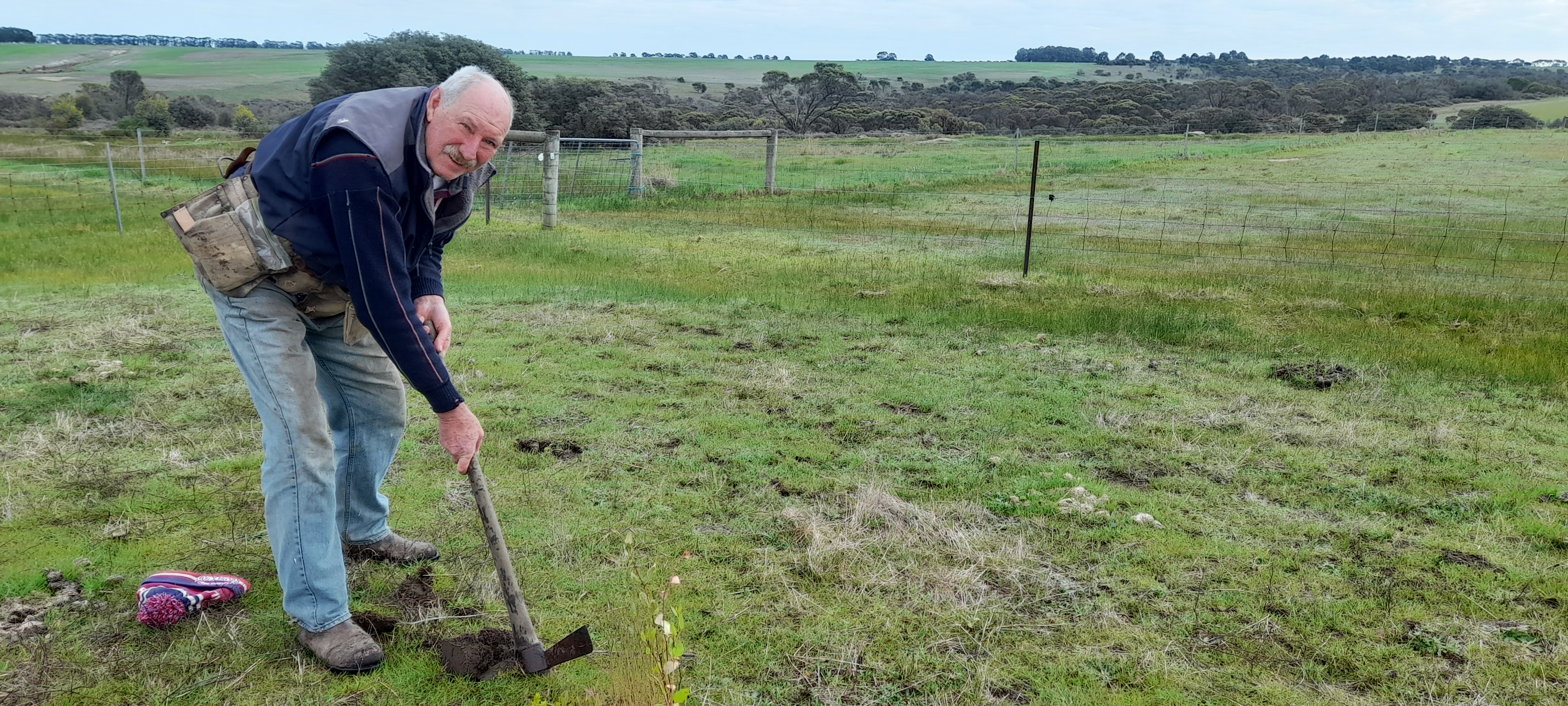
So many animals like in this area, including: magpies, crows and ravens, red-capped parrots, purple crowned lorikeets, regent parrots, Carnaby’s cockatoos, galahs, twenty-eights, butcher birds, quail, mudlarks, masked plovers, Australian Shelducks, wood ducks, barn owls, owlet nightjars, black shouldered kits, wedge tailed eagles, white faced herons, swallows, scissortails and willy-wag tails are among the bird species. Bluetongue lizards, smaller lizards and geckos, tiger snakes and dugites are among the reptiles. Southern brown bandicoots and kangaroos frequent the property, along with several species of frog, including motorbike and western banjo frogs. Insects are plentiful, including dragon flies.
Without the help of our sponsors and Fifteen Tress, we would not be able to carry out the revegetation work we do on this property. Yet it is perhaps the most important work we do on this land that we are responsible for.
Dorothy Henderson | Member | Southcoast NRM
Site 8 | Hindmarsh, SA | 150 trees
At this site near Victor Harbour in SA, Friends of Hindmarsh River Estuary planted a mixture of species indigenous to the district, and grown from locally collected seeds. Species included; Golden wattle, Seaberry saltbush, Banksia, Kangaroo thorn, Drooping sheoak, Manna Gums and Swamp Paperbacks. The native trees and shrubs were planted at several locations along the Hindmarsh River Estuary.

The planting will provide protective nesting vegetation for the threatened Hooded Plover and species such as Crested Shrike Tit, Black-chinned Honeyeater and Yellow Tailed Black Cockatoos.
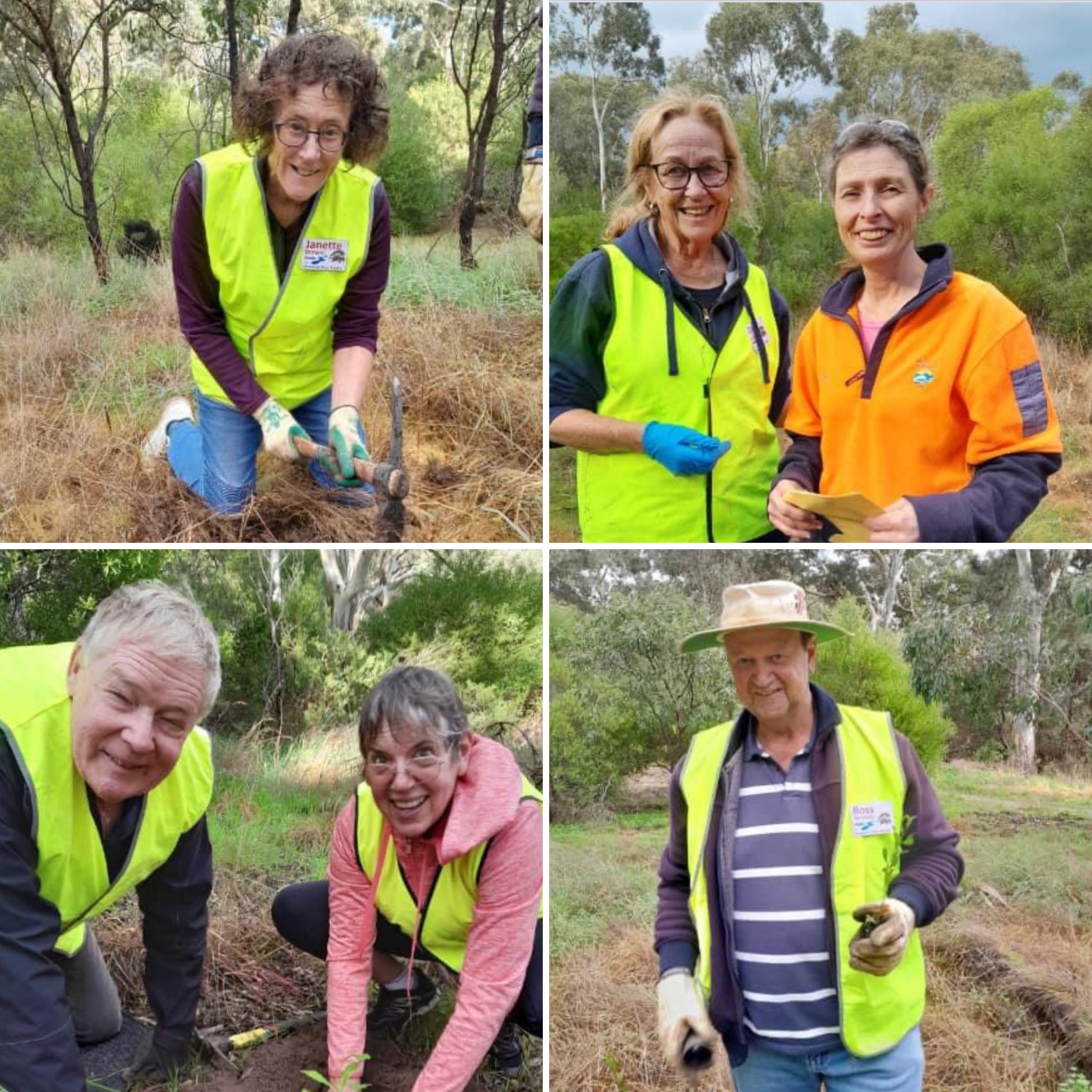
Many thanks. Your support is invaluable in assisting our group to improve the ecological environment of a the much-loved Hindmarsh River in SA.
We now have a series of signs along the estuary, inviting the public to download the Birdlife Australia Birdata app and participate in surveys.
Mark Richards | Co-convenor | Friends of Hindmarsh River Estuary
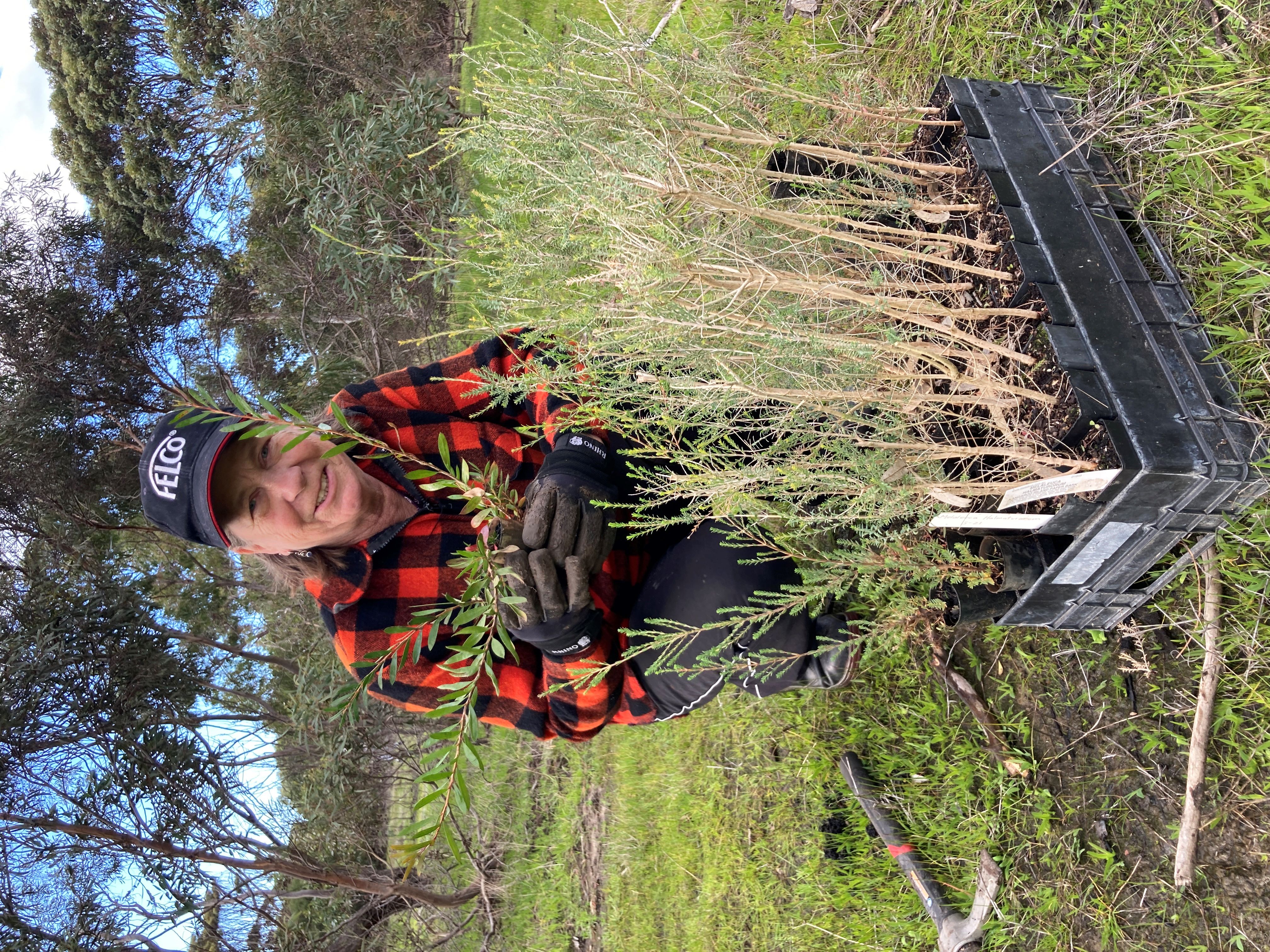
Site 9 | Cassowary Coast, QLD | 250 trees
The trees sponsored by A Subscription for the Planet, were planted along Thistle Road, Maadi, in Tropical QLD (Djiru Country) by local community group Brettacorp Inc. Over 35 difference native species of trees and shrubs were planted. They included: Bleeding Heart, Alexander Palm, Blue Quandong, Queensland Maple, Blue Ginger, Dianella, Black Bean, Cordyline, Flame Tree, Figs, Glochidon, Ulysses Butterfly Tree, Umbrella Tree and Acacias.
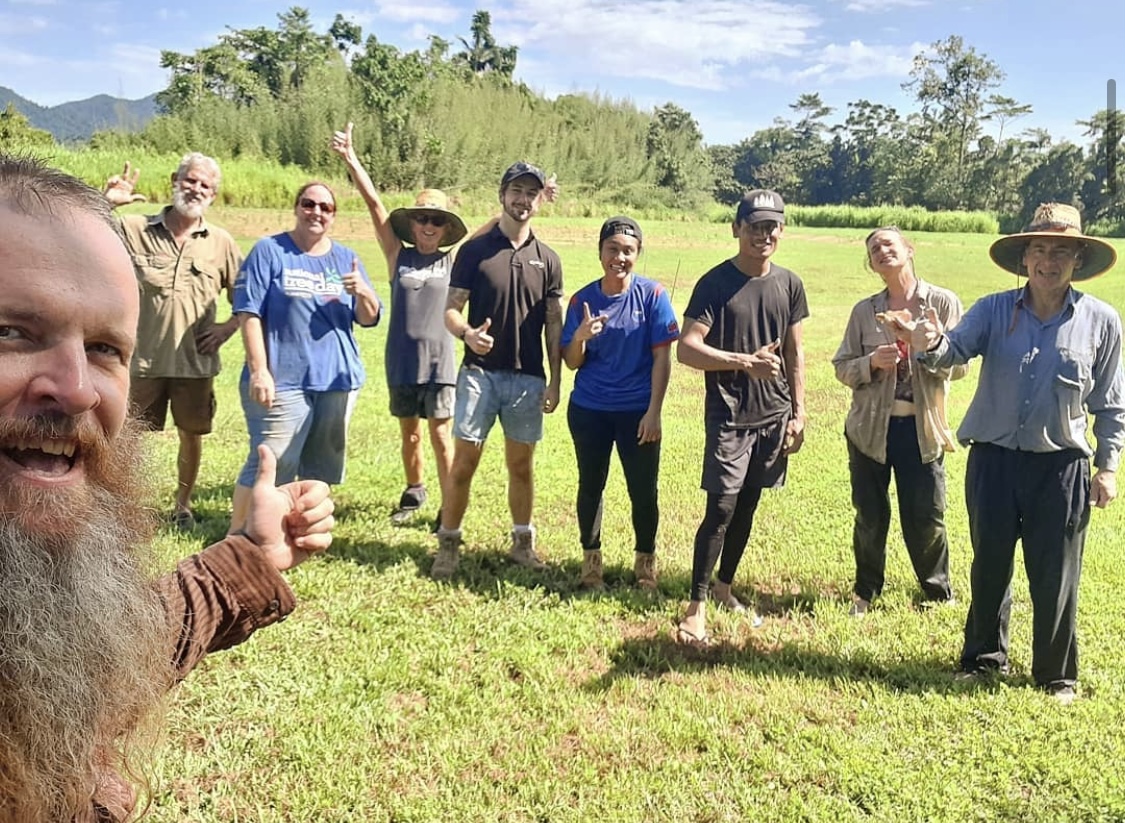
Over time, these trees will provide a food source for endangered species, especially the Southern Cassowary (endangered species). The trees will also improve the waterways dramatically and lead to longer water retention across the seasons as well as providing homes for frogs and other small aquatic insects. This reforestation project will extend and connect native remnant forest and fully rejuvenate the site with native flora.
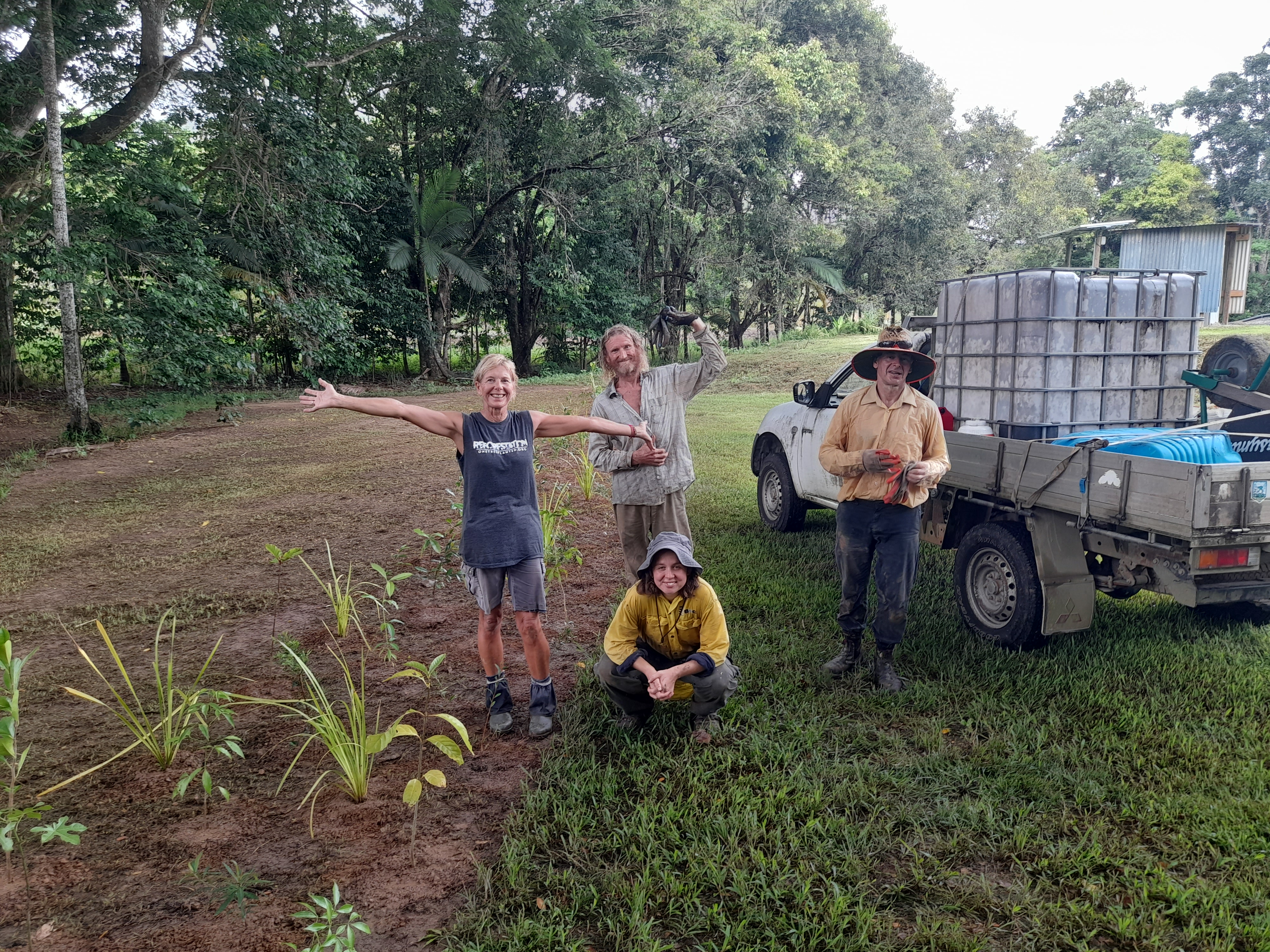
Some of the native animals that will benefit from this project include; Southern Cassowary, Broad-shouldered Dove, Emerald Dove, Imperial Pigeon, Bee Eaters, Currajongs, Sun Birds, Scrub Fowls, Eagles, Kites, Hawks, Bats, Green Frog species, and native mice and small marsupials. This area is also home to the Ulysses Butterfly, and the Cairns Birdwing Butterfly. This area is an absolute paradise.
A huge thank you to sponsors of Fifteen Trees for helping us create new habitat that supports endangered species in the Cassowary Coast region of Tropical North Queensland. With your help we are making homes and providing food for our native fauna. Thank you.
Brett Krause | Founder | Brettacorp Inc
Site 10 | Daintree Rainforest, QLD | 500 trees
Located south of the Daintree River, a new project on Bells Road has begun thanks to our generous subscibers. The resulting new forest will be a paperbark-dominated emergent layer with a rainforest understory, comprising around 77 species of locally grown trees indigenous to the area. The planting footprint runs across four regional ecosystems, three of which are classified as endangered.

The new forest will form an outreach corridor from existing mangroves. This planting will create valuable and much-needed habitat and food resource for a multitude of animals. Research on the Queensland Government WildNet species list, reveals that up to 13 species (endangered, vulnerable and near-threatened) are currently present in the area, including Australian Lacelid frogs, Macleay’s Fig-parrots, White-throated Needletails and Spectacled flying-foxes.
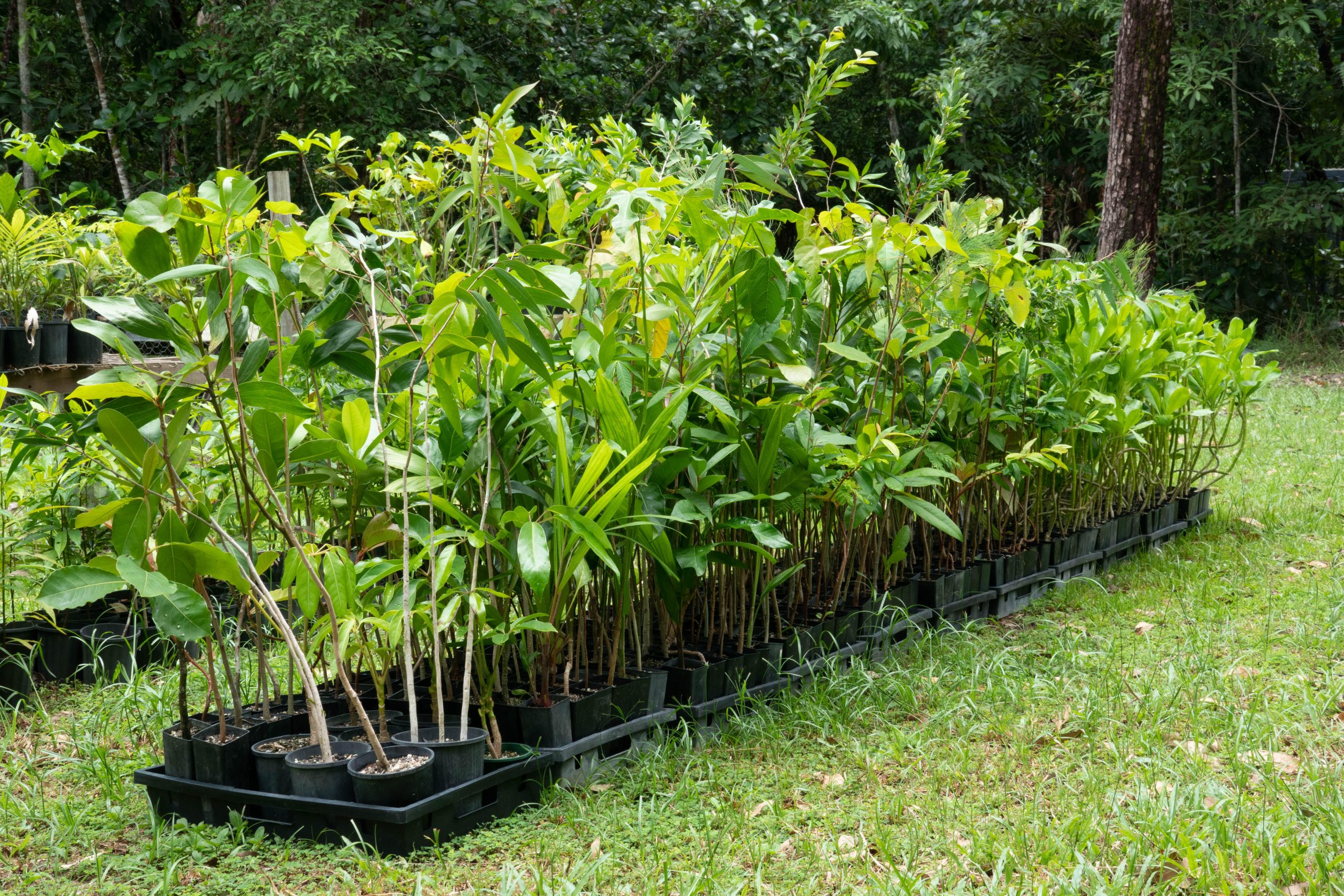
This project is being managed by Daintree Life, a small conservation group situated in the Daintree Forest of far north Queensland. This group have been planting trees in the Daintree since 2018. They firmly believe in restoring and expanding natural habitat for wildlife. Founders, Connie and Mike Pinson, work closely with Queensland Parks and Wildlife, removing rank grasses and weeds in the National Park to restore food resources and ecological function. Funding from QPTS has enabled them to continue with their revegetation work.
Site 11 | Coal Valley, TAS | 550 trees
Zoodoo is set on the hinterlands of the Coal River Tier, a beautiful bushland backdrop directly adjoining the zoos rear boundary. Situated between the towns of Tea Tree and Richmond, the 2000 acres of dry forest clads the western escarpment of the Coal River Tier. Zoodoo manages around 15% of this significant patch of threatened vegetation.
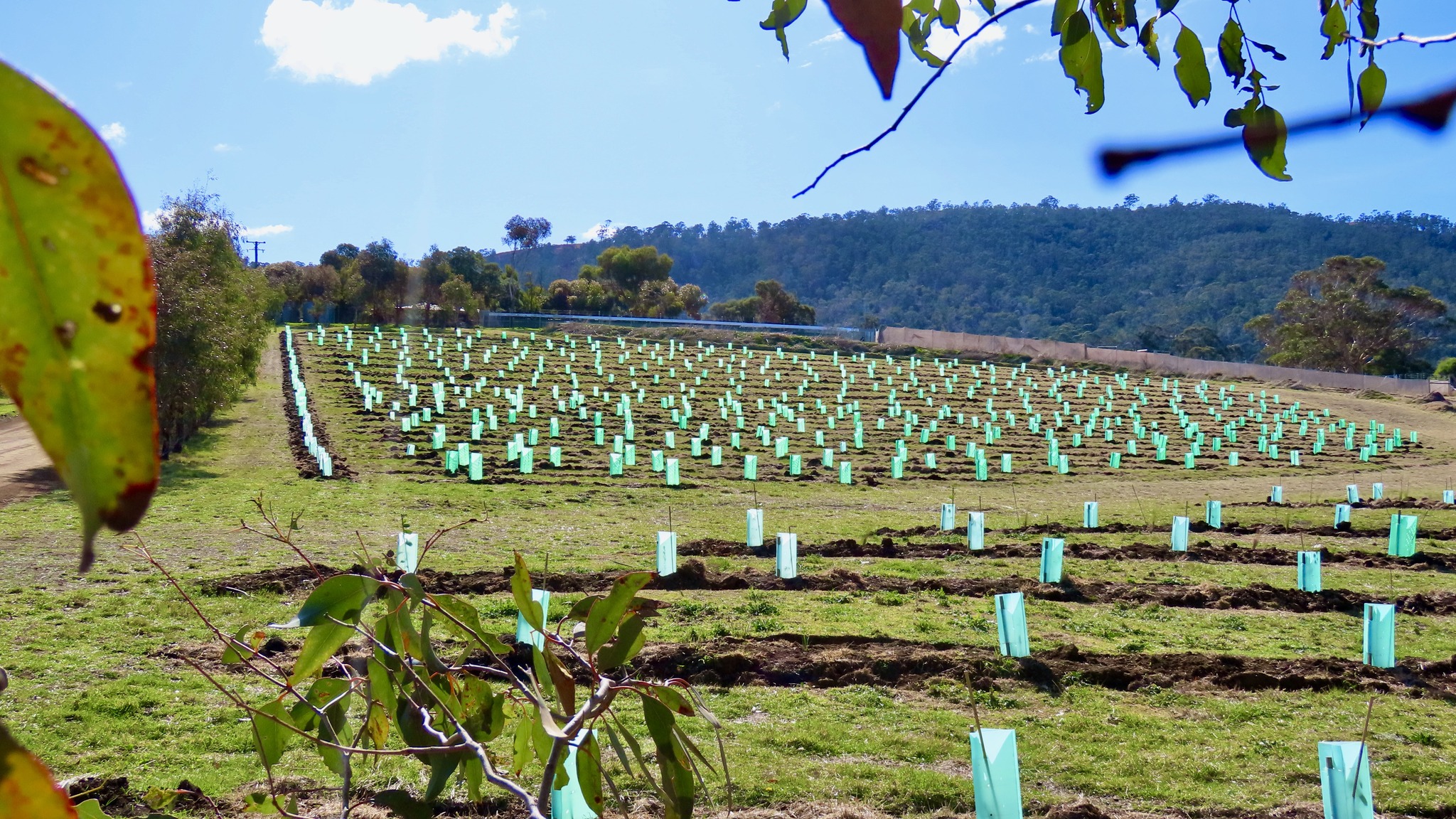
Towering 350m above the zoo, the Tiers forested slopes are isolated from other bushland remnants in the region by adjoining human modified environs. The bushland has become an ‘island adrift in a sea of agriculture’. After a preliminary assessment of the site by the Tasmanian Land Conservancies Land for Wildlife program, the refuge has been found to hold significant biodiversity values. Early results of monitoring in the refuge with automatic wildlife detection cameras have identified multiple individual endangered Tasmanian Devils and vulnerable Spotted tailed quolls breeding and living on the Tier.
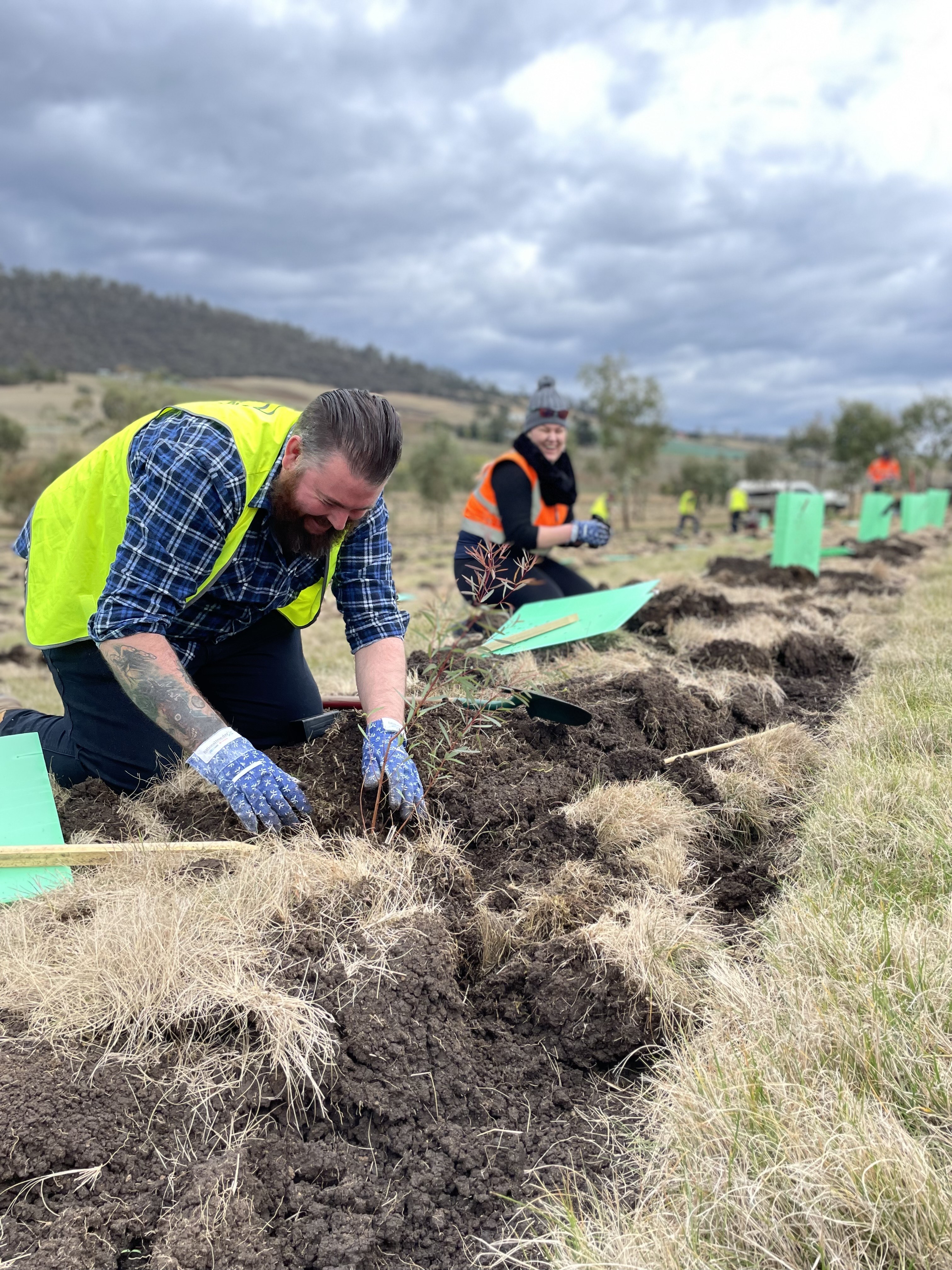 The trees will be watered over the coming months to ensure these trees survive their first summer.
The trees will be watered over the coming months to ensure these trees survive their first summer.
Some neighbouring properties along the Tier have also recognised the natural values of this vegetation with a conservation covenant on one 320 acre title and a Land for Wildlife block on another 55 acres. The Zoo hopes to seek further collaboration with the aim of promoting the protection and management of this valuable native forest remnant.
This is a great example of increasing your impact! Through your support this project is now growing by leaps and bounds.
Site 12 | Dodges Ferry, TAS | 250 trees
Dodges Ferry Primary School planted out trees at 2 sites, with some trees going along the school loop track and some being planted at Flora Park which surrounds the Dodges Ferry Skate Park.
The area around the loop track which the school plated out is a grassy area which adjoins wetlands and the coast. The area along the loop track is used by members of the community to walk along and exercise their dogs.
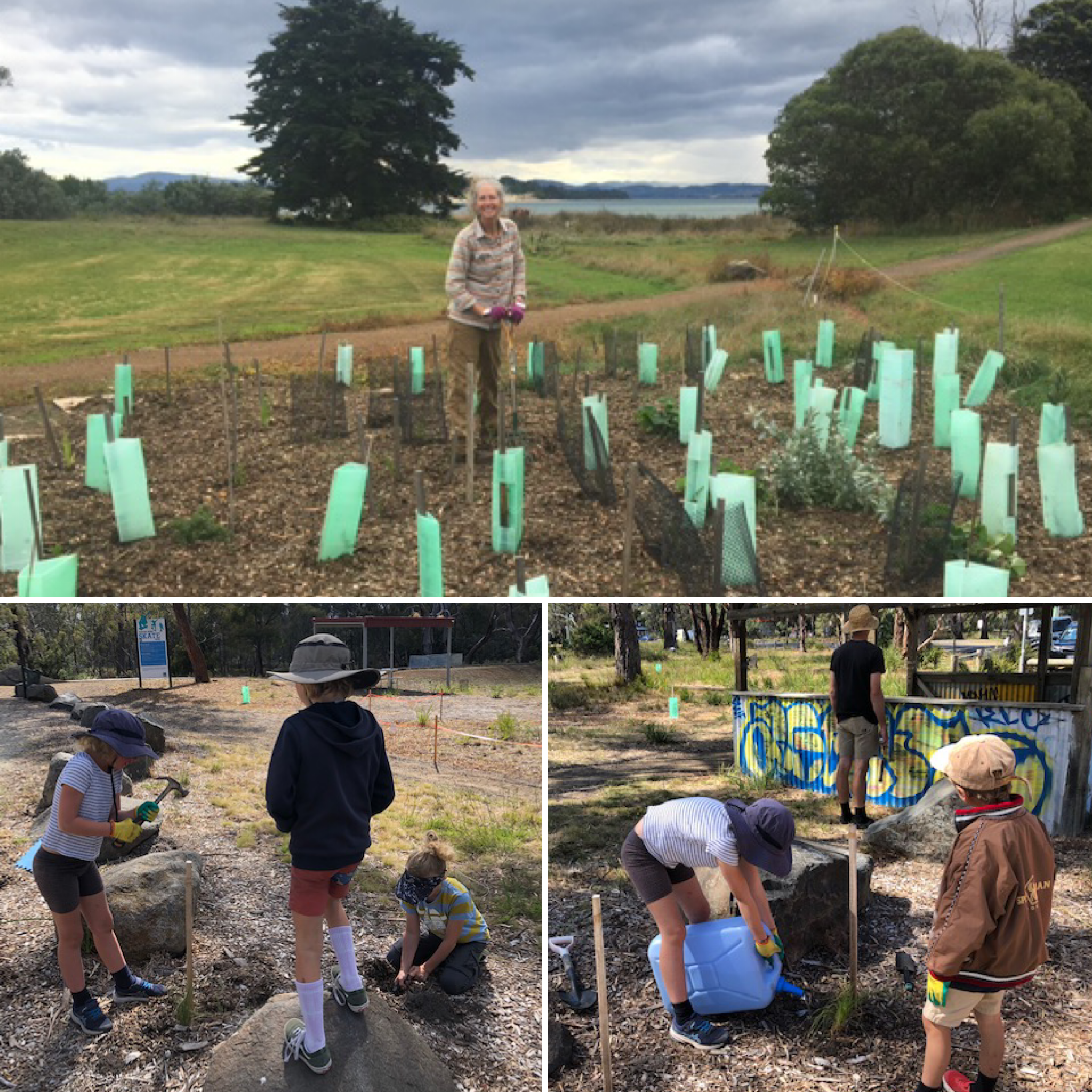
The Flora Park is open dry sclerophyll forest which is currently being managed by the landcare group who is revegetating and removing weeds from the area. The skate park is used by families and youth, and it also has a walking track through it.
Lots of shore birds use the area, as well as parrots and little superb fairy wrens have started to come back in this area as a result of encouraging the flowering undergrowth to regrow.
The kids genuinely love this activity and feel like they are directly contributing to the betterment of the world through planting trees. Both groups were actively engaged in getting their hands dirty and the plants in the ground! Many thanks for your support.
Sonja Ralph | Environmental Teacher | Dodges Ferry Primary School

If you missed last year’s report of your trees, here’s the link.
Friends of Fifteen Trees 2022 Report
Writer: Colleen Filippa
With a background in Environmental Science, Colleen is the Founding Director of Fifteen Trees. In 2009, after 20 years in primary, secondary and tertiary education institutions, Colleen left the classroom to start the company. Fifteen Trees is a social enterprise assisting individuals and companies to reduce their carbon footprint by supporting community groups such as Landcare, schools and environmental networks.
RECENT TREE PLANTINGS
500 TREES PLANTED
100 TREES PLANTED
125 TREES PLANTED
SIGN UP FOR OUR MONTHLY UPDATES.
Restoring Australian ecosystems. Supporting communities with their revegetation projects for a greener and healthier planet.
Fifteen Trees acknowledges Indigenous Australians as the traditional custodians of the lands on which we work, live and play.
We recognise that Indigenous Australians have cared for and lived in harmony with this land for millennia, and their knowledge and wisdom of the land endures.
We pay our respects to Elders past, present and emerging and stand in solidarity as Indigenous Australians seek a fairer and more sustainable future for the land and its people.
